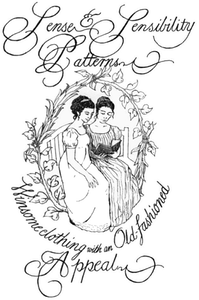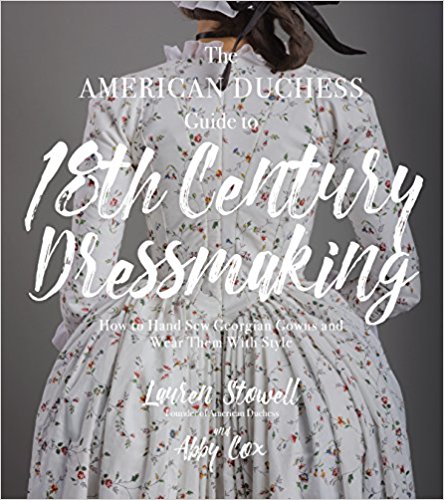The Must-Have Book of 2018
When I began to seriously study 18th-century gowns on my England tours, I quickly fell in love. I went from thinking, "Nah, I'll leave 18th-century patterns to others" to "Oh, golly! I have got to draft a pattern for my girls!" I did that in 2009, and I ended up making at least half a dozen dresses for my oldest daughters, who adored playing in theirs (elbow ruffles, anyone?). It wasn't long before adult customers began asking for a matching pattern, so I pulled up my socks and dove in, using all the notes I had made from trips to the Museum of London (where my all-time favorite 1780s gown resides), the V&A, and the Snowshill Collection. The result was my Ladies' Portrait Dress Pattern, published in late 2010.I admit I was nervous about publishing a paper pattern for this era, because that's just not how things were made in the 1700s. Gowns were cut and fitted to the lady in person over her chemise and stays, resulting in that glove-perfect fit we see in the portraits. It's not rocket science, but it's also a lot more labor-intensive than a 1940s dress you can run up quickly on a sewing machine! While I wrote instructions for a conventional sewing machine, I also ended up creating an appendix to the pattern that explained how to use authentic hand-stitching and sleeve-setting techniques. However, I still get a lot of questions on how to make these gowns, so American Duchess's new book represents a "hallelujah" moment in historical costuming!Since I live overseas, I ordered the eBook so I could read it immediately, and I can't wait to get my hands on my paper copy, which is coming over this month (whee!). The eBook is very user-friendly, and I began highlighting and making notes immediately. Check out this passage from the opening of the book:Yes, yes, yes, and yes again. This whole page is so important. If you try to just run up a Georgian gown on a sewing machine from a paper pattern as-is without fitting by hand, I can guarantee you will get a disappointing fit. But showing exactly how to drape, make adjustments, and fit each piece to the body is simply not within a scope of a single paper pattern. It requires copious amounts of photographs. And guess what? That's exactly what you get with this marvelous gem of a book! This really isn't a small guidebook at all but a veritable encyclopedia of 18th-century sewing and fitting techniques, all beautifully illustrated with clear, full-color photos and sharp line drawings. You learn how to cut, drape, fit, and stitch gowns from 1740-1790, including an Italian Gown, which is the main option in my pattern. As an added bonus, there are instructions for accessories, including an apron, chemisette, hat, muff, and reticules. I cannot praise this book highly enough. It is a much-needed addition to any serious historical costumer's library and definitely marries practicality with the best research (Abby worked for Colonial Williamsburg, and both ladies produce the gorgeous historical footwear for American Duchess). If you're serious about stitching up Georgian gowns, don't buy any more fabric or notions until you've got this book in your hands! Go forth!
Paperback:
eBook:




